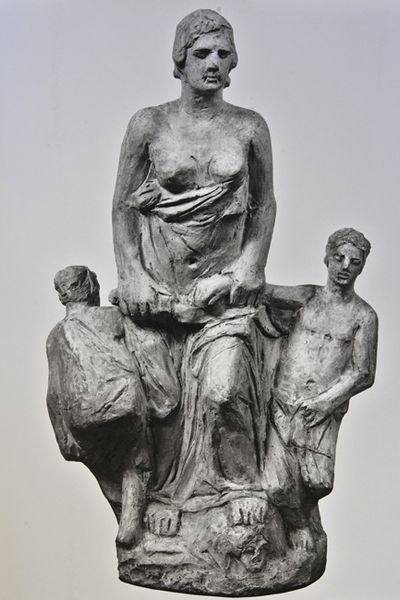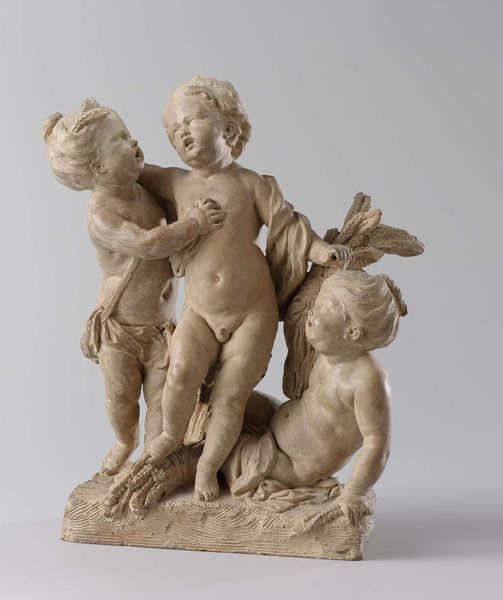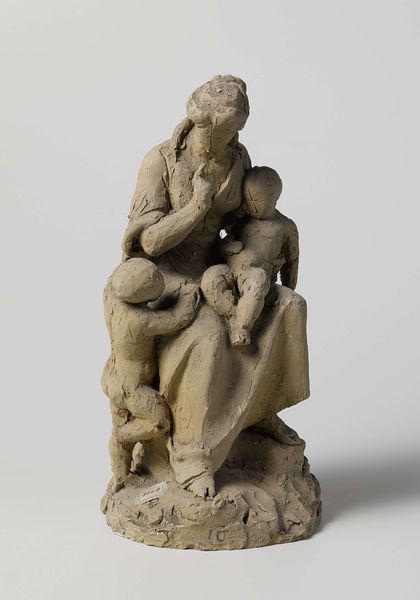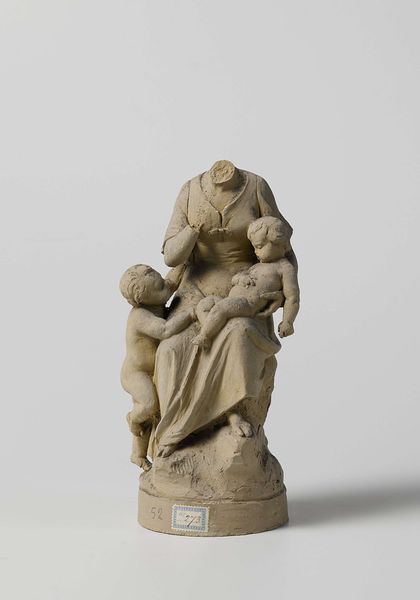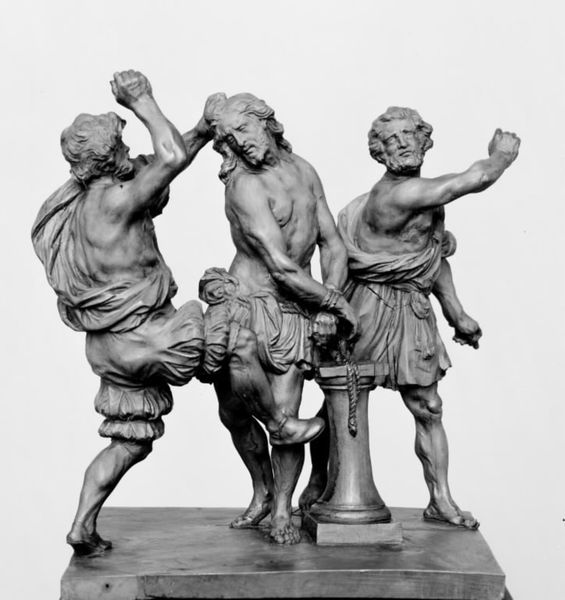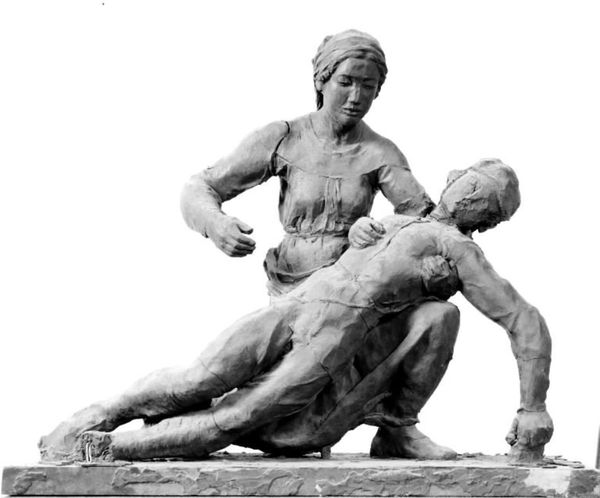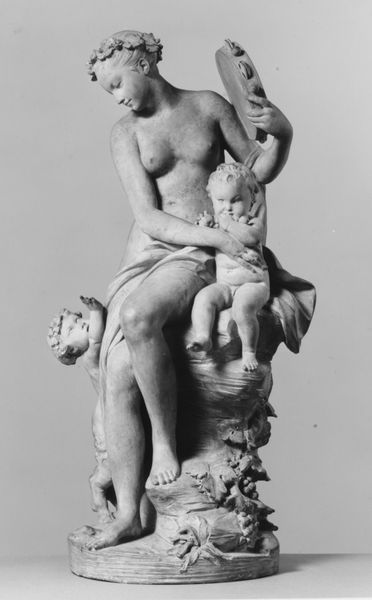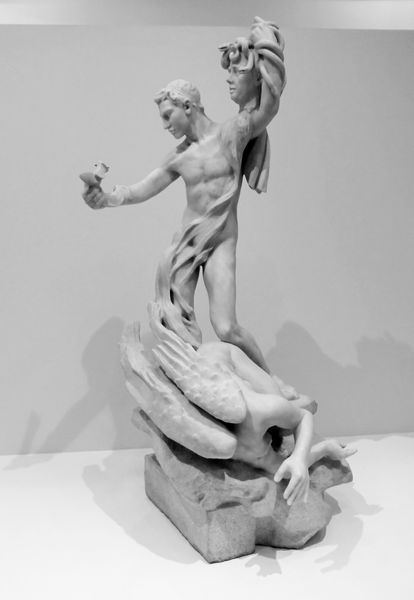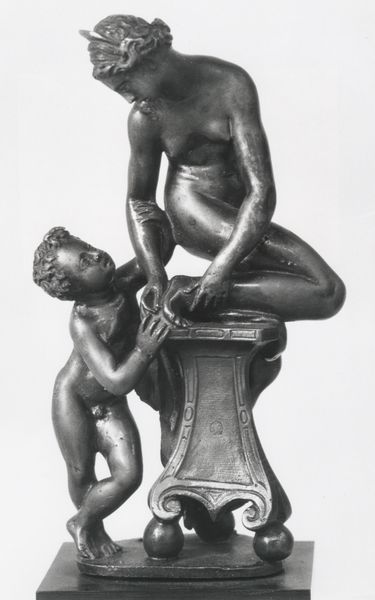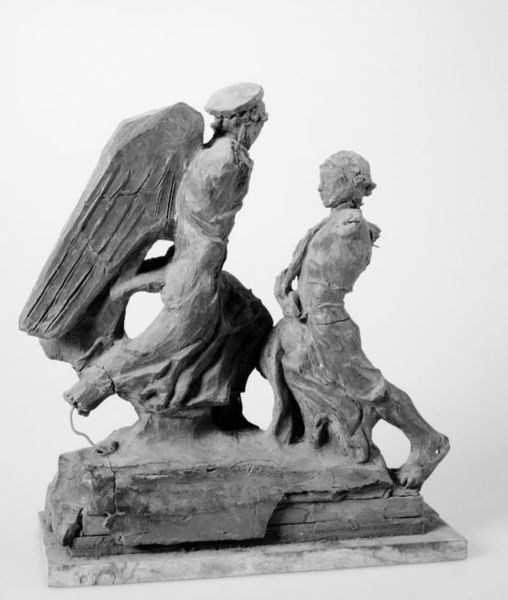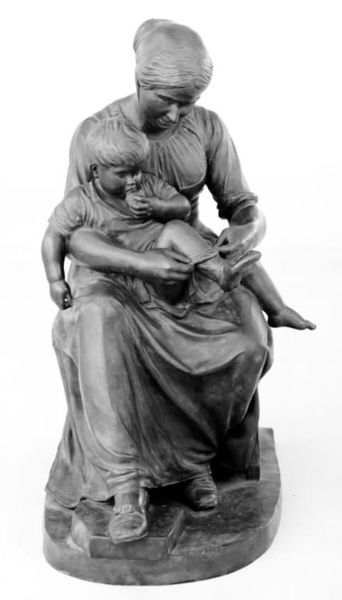
Gående kvinde med en datter i hånden, på hendes anden side en knælende dreng, som hun griber om skulderen 1883 - 1952
0:00
0:00
sculpture
#
portrait
#
sculpture
#
frontview face
#
figuration
#
sculpture
#
black and white
Dimensions: 260 mm (height) x 230 mm (width) x 120 mm (depth) (netto)
Curator: Before us, we have Rasmus Harboe’s sculpture, "Gående kvinde med en datter i hånden, på hendes anden side en knælende dreng, som hun griber om skulderen," dating from 1883 to 1952. Editor: It has a strangely melancholic feel, despite its somewhat classical composition. The figures are very simple, rough even. The black and white image gives a haunting character. Curator: That sense of roughness really chimes with the period. Think about the shift away from idealized forms happening at the time and the interest in raw, emotional honesty. I would say the figures also suggest an interesting social context; are they war refugees or a family seeking a better future perhaps? Editor: The repetition of simple gestures has emotional power. The woman's grip on the girl's hand contrasts with the support on the kneeling boy. There's a symbolic echo, almost biblical, like depictions of the Holy Family. She seems burdened with the responsibility of their care. Curator: Yes, that maternal care is palpable! The figure also speaks of historical depictions of mothers with children, in early Christian art for example, she recalls ideals of nurture and societal duty that is so ever present in the patriarchal European Canon. Editor: Looking at the figures themselves, even fragmented as they are, reminds us of our own experiences and responsibilities within family, perhaps the burden to uphold societal expectations. Curator: A strong observation. How artistic interventions relate to humanism and the nuclear family are ever present today, when considering the contemporary Western paradigm. Editor: The stark rendering invites you to project your own anxieties or hopes onto the family group. It becomes a universal representation of parenthood, a story of survival or hope, set against all adversities. Curator: Absolutely. It invites introspection. A thought-provoking sculpture on multiple levels. Editor: Indeed, its symbolism feels strangely timeless, as many families still endure.
Comments
No comments
Be the first to comment and join the conversation on the ultimate creative platform.
